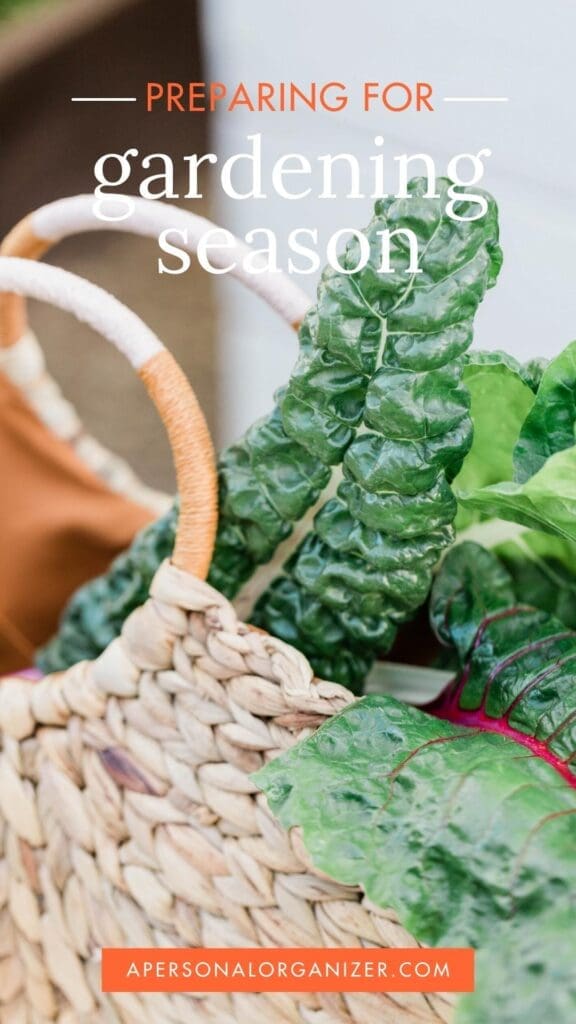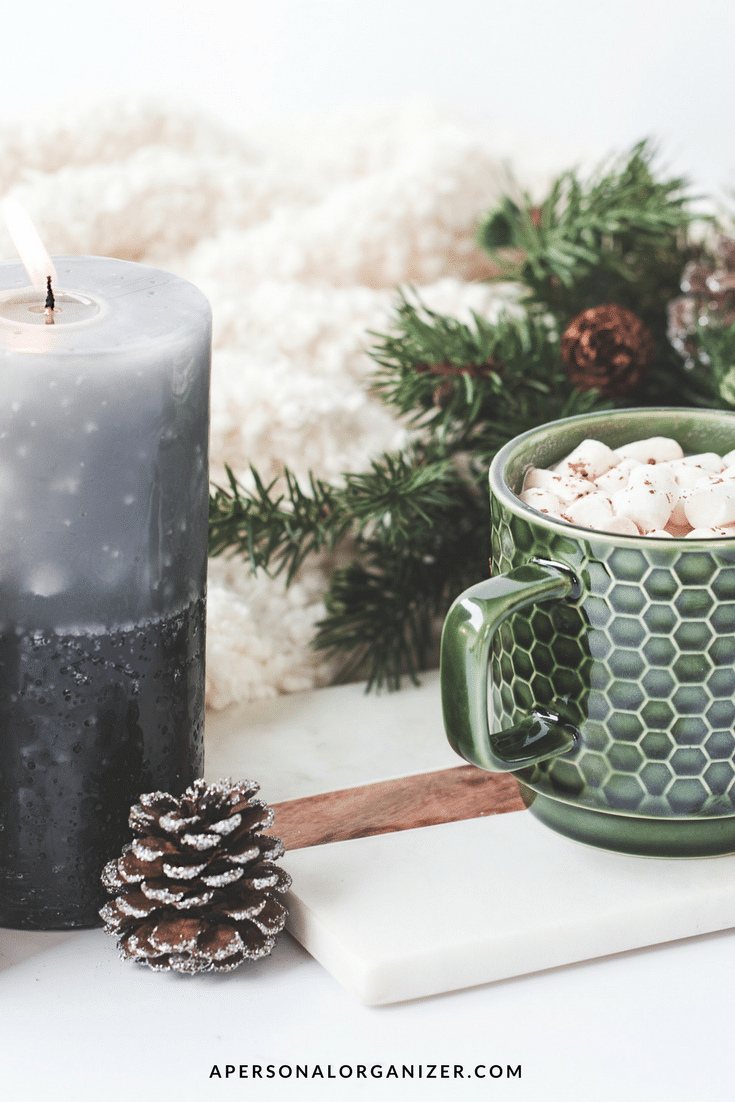This post may contain affiliate links for your convenience. As an Amazon Associate, A Personal Organizer, LLC earns from qualifying purchases.
Starting a garden at home can be an incredibly rewarding experience for a family. Your family can enjoy fresh produce and vegetables while growing closer and bonding over your shared plants.

However, many people find the gardening season overwhelming, especially if they’ve never had their own garden before. Luckily, there are many tasks that you can cross off of your list before springtime gardening season has begun.
Doing these things in fall or summer will ensure that your garden can thrive without you feeling overwhelmed.
Here are a few gardening tips for how to prepare for the gardening season, including soil preparation, perennial planning, learning your hardiness zone, composting, and hardy bulb planting.
If you need help keeping track of all these dates and tasks, consider purchasing my digital Garden Planner. It will help you keep on top of year-round tasks for your garden and includes helpful forms like seed inventories, plant logs, and veggie calendars.
Things to do in the Fall – Before Gardening Season has Begun
In order to ensure a stress-free gardening experience, there are a number of tasks that are best completed well before the gardening season has begun.
Fall is usually the best time to begin these tasks, but don’t worry if you don’t get started until just before the planting season.
When you really need to do these tips generally depends on how harsh your climate is. If you live somewhere with cold and snowy winters, make sure to take full advantage of fall to accomplish certain tasks before everything freezes over for the winter.
If you live somewhere where the weather is relatively warm year-round, you have much more leeway when you complete these tasks.
Soil Preparation in Advance
The best time to prepare the soil and plant beds for springtime planting is fall. This can be done in the spring just before you plant, but we find that accomplishing proper soil preparation early is the key to a stress-free garden.
Start by clearing the planting area of any rocks, weeds, sticks, or other debris that might get in the way.
To begin preparing your beds, decide exactly where you want to plant and use a spade to dig up the soil to around 1 foot deep.
You want to do this to make this soil extra healthy for your plants. Incorporate manure or compost as needed in this soil. Make sure the soil stays loose for the best planting.
Learn Your Hardiness Zone
One thing that you must do before spring planting season has begun is learning your hardiness zone.
Your hardiness zone refers to what plants can actually thrive and survive in your region. Not all plants are happy with cold or hot temperatures.
Before committing to any plants, it is vital to figure out how well they will do in your area.
Learning your hardiness zone is also great for figuring out how long your planting season will last.
Depending on your local climate, you may get more or fewer days before your last frost date in spring. This will directly affect when you can plant certain vegetables and flowers.
Start Composting Early
If you would like your garden to be more self-sustaining, then make sure to prepare compost and manure well before the planting season has begun.
If you have excess manure lying around, there are two things you need to keep in mind.
First, only manure from certain animals can be used to help plants grow. For instance, horse manure is great for gardening.
However, pig or dog manure has bacteria and toxins that can make humans very sick. As a rule of thumb, if the animal eats meat, its manure shouldn’t be used for planting.
Second, any manure that you plan on using cannot be fresh. Even the finest horse manure has too much nitrogen and bacteria when it is fresh. So the manure must be ‘rotted’ for six months prior to use.
If you live in an area full of horses, keep in mind that many barns will happily give away old horse manure for low prices.
If you plan on using compost instead of manure, you should also begin to prepare it well before the spring planting season starts.
Things like vegetable peels, coffee grinds, and plant/grass clippings can act as perfect sources of fertilizer. But, this process takes time.
Make sure that your compost is mature enough by the time you plan to use it.

Properly Prepare for Perennials
This tip is especially for anyone who plans on having perennials and annuals in their garden.
Remember that it can take three years to reach maturity! If you want to have perennials but live somewhere with a harsh winter, make sure that they will actually survive your climate.
Because perennials can stay in the ground seemingly dormant for a while, it’s all too easy to forget about them and accidentally dig them up or trample them.
Make sure that any perennial-type plants that will be spending the winter outside are clearly marked.
Here are two perennial newbie mistakes that I had to deal with later:
- I underestimated their growth and purchased too many of them not taking into account how full they’d grow later. That forced me to replan the garden and move some of them around to give them breathing room and create white space in the garden bed.
- I got didn’t take into account their blooming times and purchased plants that would bloom too close or together. To always have something blooming in your garden, research “blooming by month + your state”.

Plant Hardy Bulbs in Fall
If you live somewhere where the ground freezes over each winter, it is best to plant certain hardy bulbs in fall before this occurs.
Tulips, ornamental alliums, crocuses, and others all fall into this category. Most of these only require one planting and will continue to come up year after year. After our long, artic cold winters, my tulips are the joy of the house when they finally bloom in mid-May.
Bulbs are great if you want little upkeep and like a one-and-done type of plant.
For these hardy bulbs, place them in a hole in the soil bed. The hole should be two to three times the depth of the bulb.
Like with perennials, make sure that you mark these bulbs clearly during winter so that they are not stepped on or dug up.
Conclusion
If you can complete all of these tasks before the spring planting season begins, you will be well on your way to a successful and stress-free garden.
Of course, this list is by no means all-encompassing. Some people plan their gardens much less thoroughly than others but still achieve good results.
At the end of the day, preparing for gardening comes down to how much time and energy you can devote to your garden before planting in spring.
If you need more help staying organized, my Garden Planner is just the tool for you.








